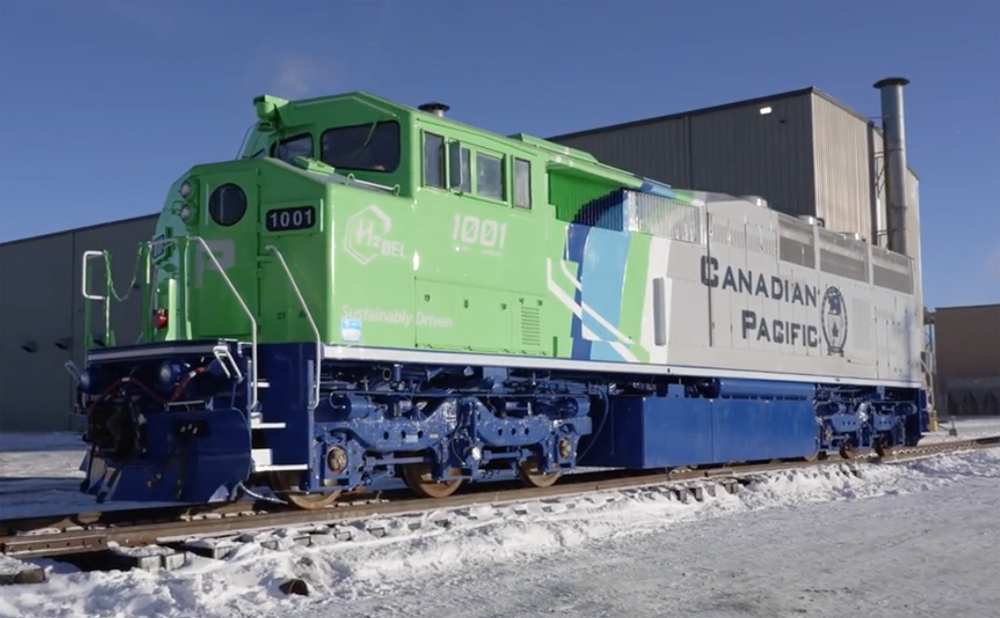
NEW YORK — Canadian Pacific’s experimental hydrogen-powered locomotive made its maiden revenue run last month in Calgary, Alberta, taking the first step in determining whether the technology could one day replace diesel-electric locomotives.
“I’ll tell you, the excitement around it, the potential of it, is real,” CEO Keith Creel told the RailTrends conference on Tuesday. “And to see it two weeks ago, running down the main line at main line speed pulling a load behind it, I mean it made the hairs on my arm stand up because I would have told you two years ago it’s a pipe dream … Well, it’s not a pipe dream. It’s a reality. Still a lot of work left to do, but it’s super, super exciting.”
The home-built unit, converted SD40-2F No. 1001, is dubbed H2 0EL for “hydrogen zero-emissions locomotive.” The Oct. 28 revenue test run was the second main line foray this year for the unit, which uses hydrogen fuel cells and batteries to power its electric traction motors.
CP is using solar power to produce hydrogen at its Calgary headquarters. It also has a separate hydrogen production facility in Edmonton. CP is partnering with the Alberta provincial government to build a DC-traction version as well as another AC-traction unit.
By the end of next year, CP expects to have the three locomotives switching customers in Calgary, Edmonton, and Vancouver, Creel says.

“The next step is scalability,” Creel says, through partnering with a customer that can build enough road locomotives to prove the technology on the rugged CP main line in the Canadian Rockies west of Calgary.
“It’s the perfect test bed. If you can operate there — heavy haul, cold temperatures, the most challenging operational conditions I’ve ever experienced in my career … it will work anywhere,” Creel says.
If the tests are successful, hydrogen fuel-cell locomotives are likely to first be deployed in local service until the railway can create a hydrogen fueling network across its system and build the tenders necessary to give the locomotives extended range.
“I’m telling you this has the potential, if it proves its mettle and it shakes out in the very tough validation tests we’ll give it, it will be truly transformational for this industry,” Creel says. “And it’s something we’re extremely proud of.”
Creel emphasized that the hydrogen project is very much an experiment and CP is not betting the farm on its effort to create a green locomotive.
Alberta is aiming to transition to a hydrogen-based economy as part of a push toward cleaner energy supplies. CP would haul hydrogen from Alberta to customers across its system, as well as to its own fueling facilities.
All of the Class I railroads have announced ambitious goals to reduce their carbon emissions as part of an effort to combat climate change.
Wabtec and Progress Rail are offering battery-electric hybrid locomotives and are experimenting with higher blends of biodiesel and renewable diesel to reduce greenhouse gas emissions. BNSF Railway tested Wabtec’s battery electric locomotive as part of a hybrid consist that powered merchandise trains between Stockton and Barstow, Calif., last year.
Union Pacific has ordered 20 battery electric locomotives — 10 from each builder — for use in tests at two yards.
Creel spoke at the RailTrends 2022 conference sponsored by trade publication Progressive Railroading and independent analyst Anthony B. Hatch.






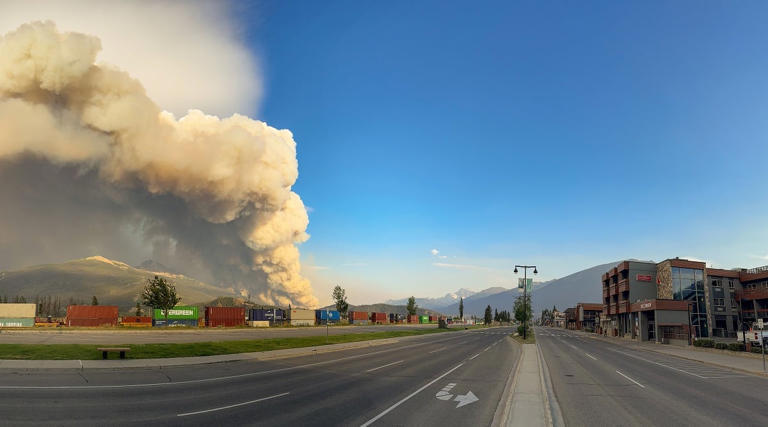
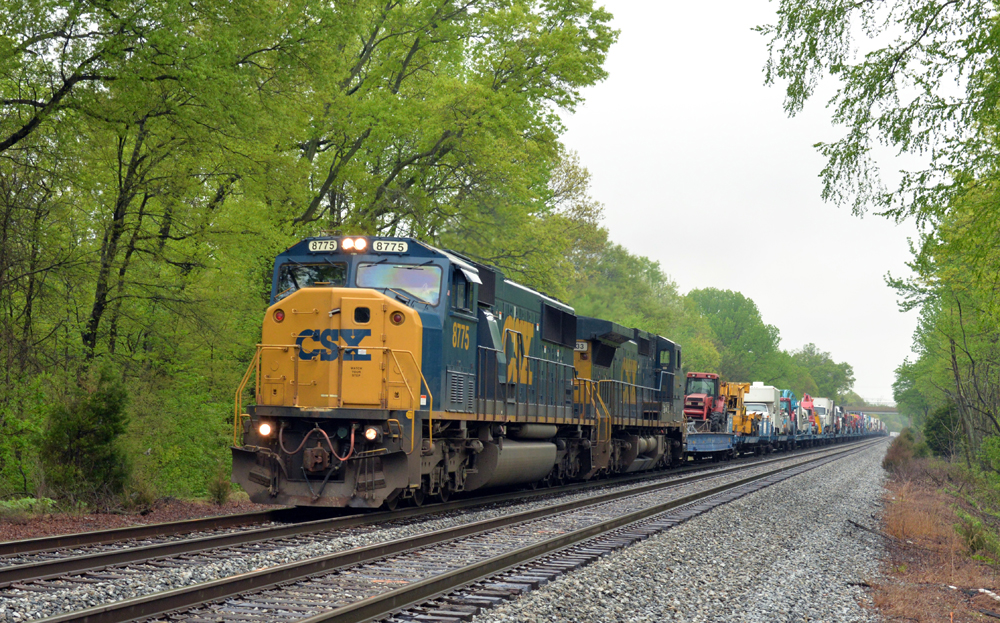
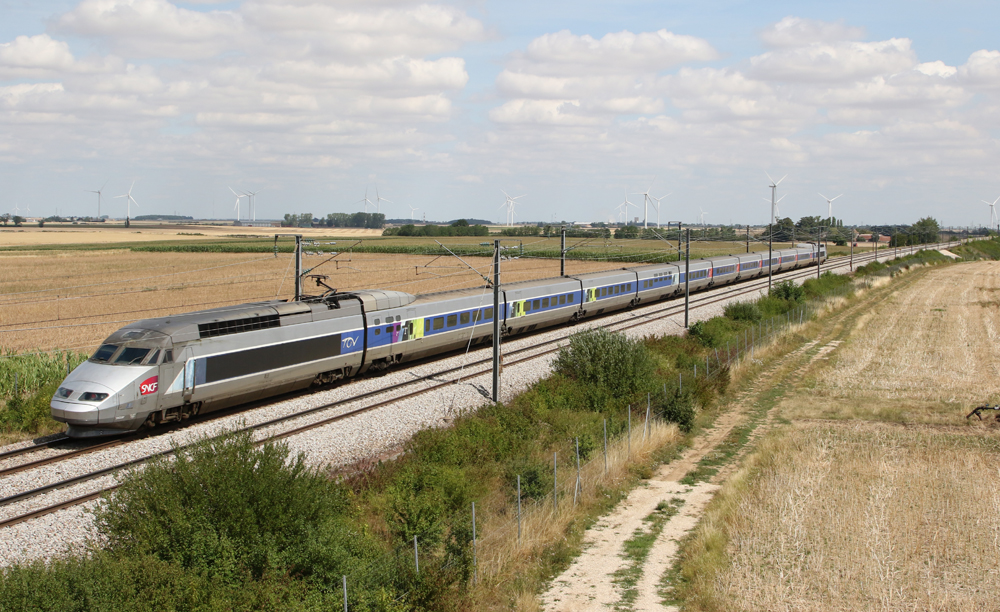
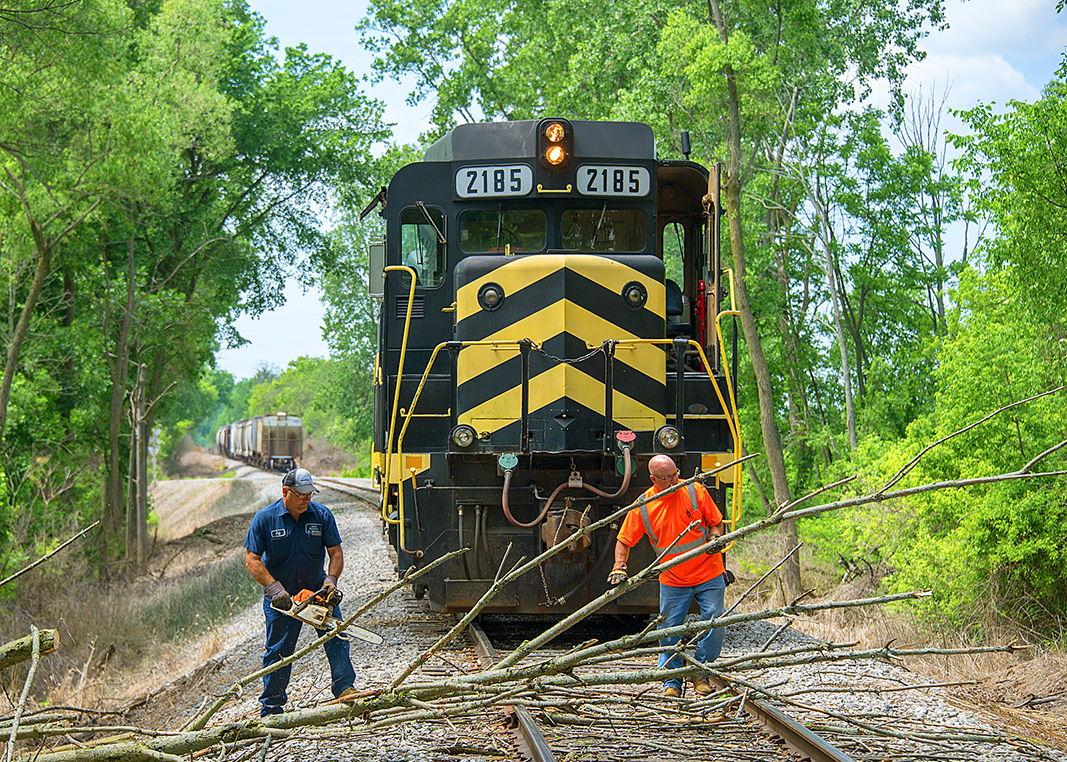




Interesting to see how this pans out,
You can always tell those in the thrall of big oil.
Why wouldn’t you want to explore ways to be independent of a commodity with a price which depends on politics in countries thousands of miles away? Transporting and storing diesel fuel has costs. What is wrong with being able to make fuel more locally to use?
So what is the range of this locomotive? Hydrogen has what, 1/10th the energy density of diesel fuel? Will it need a tender bigger than GE’s big blows had?
Using solar to power an electrolysis process to split H2O and collect the H2 might turn out to be a low-cost source, time will tell.
All this is an example of Wall Street investment firms dictating to corporations. Today they are dictating EGS stuff in addition to profit. Would all of the Class 1s really be experimenting with these alternative powered modes without regard to activist shareholders? Hmm!
Will these locomotives work? Probably. Will they be viable system wide? TBD. Will they really reduce green house gases after netting against magnitudes more that are produced daily all across the developing and underdeveloped world? A drop in the bucket. I believe the North American rail industry has already done disproportionately far more than its fair share toward this effort. Although I wish well, it’s time to look elsewhere.
Not exactly sure of how the current process produces H2 from Solar Power??? For years a major source of H2 Gas was achieved by burning natural gas, and then ‘fracking’ (?) it out of the gaseous result of that process. It was then ‘collected'(?) and used to whatever need was present…[ ie; ‘hydrogenation’ as used to make vegetable shortenings, or even compressed into cylinders for industrial use/distribution.]
Solar Production of H2 seems to be another ‘iffy’ weather-related, process….Dependent on “Mother Nature’ to do her ‘part’…..(?) Will be interesting to follow this story….
Sam, Here is an article to help you. Even back in high school our science teacher talked about producing H2 through electric means of various disciplines including solar. Solar in the 1970’s was really just a big “what if” for the future, the future is now and many applications of solar use are common and evolving too.
http://www.fsec.ucf.edu/en/consumer/hydrogen/basics/production-solar.htm
As of now, hydrogen is mostly produced from petroleum, AFAIK. To actually reduce “greenhouse gasses”, hydrogen needs to be cost-competitively produced from splitting the H2O water molecule.
All political. The railroad knows there can never be enough solar collectors to power a vast locomotive fleet.